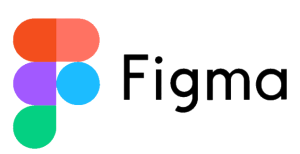 Working in a team can be chaotic, but Figma is trying to change that for many industries. Figma has been gaining popularity across industries for being a versatile design tool. Since the launch of FigJam by Figma in early 2021, its user base has expanded even further. While Figma focuses on design and prototyping, FigJam is designed as an all-in-one collaborative tool. Figma is used in different industries because it enables teams to brainstorm, create diagrams, do meetings, and more in real time.
Working in a team can be chaotic, but Figma is trying to change that for many industries. Figma has been gaining popularity across industries for being a versatile design tool. Since the launch of FigJam by Figma in early 2021, its user base has expanded even further. While Figma focuses on design and prototyping, FigJam is designed as an all-in-one collaborative tool. Figma is used in different industries because it enables teams to brainstorm, create diagrams, do meetings, and more in real time.
Here’s a glimpse of how and what Figma is used for in different industries:
1. Figma used in Technology and Software Development
Figma is mainly used in the technology sector for designing user interfaces (UI) and user experiences (UX). From software to mobile apps, a UI/UX Designer needs to create a user’s journey and design it based on them. Figma helps designers in creating prototypes and go over designs efficiently so developers can bring the design into reality. For example, Google has embraced Figma for its design processes. They utilize its collaborative features and design capabilities to create a seamless journey and experience for their users. Take a look at the newest features that Google has been working on.
2. Figma in Marketing and Advertising
Figma is used by marketing and advertising professionals to create visual assets, design marketing materials, and prototype landing pages or email campaigns. Much like users’ journeys, customers’ journeys are just as important. Market researcher needs to present their findings before creating a campaign. Marketing is many team effort. Graphic designers, copywriters, and marketing coordinators work together to create cohesive brand aesthetics and effective messaging. Again, Figjam is used as an online workspace.
3. Figma in Design and Industrial Design
Figma is utilized by product designers and industrial designers to create product mockups and visual prototypes. Figma’s UI component and interaction design features help greatly in the product design and development process. Recognizing its potential, Adobe has also adopted Figma as a preferred design tool.
4. Figma used in Education and E-Learning
Figma is increasingly used in educational institutions and e-learning platforms to create visually engaging course materials, design learning interfaces, and collaborate on instructional design projects. It enables educators and instructional designers to communicate complex concepts effectively through visuals.
5. Figma used in Architecture and Interior Design
Figma is also used by architects and interior designers to create digital representations of architectural designs. With Figma, architects and designers can visualize floor plans and communicate design concepts with clients. Its collaborative features facilitate communication and feedback during the design process. Clients can check the design and revision easily from the comfort of their own space which helps in speeding up the process.
6. Figma in Healthcare and Telemedicine
Figma finds applications in the healthcare industry for designing user interfaces of healthcare software, telemedicine platforms, and patient portals. It enables designers to create intuitive and user-friendly interfaces for healthcare professionals and patients. Keep in mind that patients have ranging backgrounds. Making the platform easy to understand and navigate for anyone is essential to get the help they need. Brainstorming and collaborating within a team may become hard when many heads have their ideas on how something should look. Communicating in real-time while being able to work and show what they mean, helps solve this problem to a great extent.
Companies are increasingly turning to Figma due to its ability to enhance collaboration, productivity, and design outcomes. Learn more about how companies are redesigning their workflow using Figma. Figma gave teams the ability to do most things in one platform, this makes communication efficient. No need for tenths of tabs and apps to open at the same time, installing the same version across many devices, or even downloading individual plug-ins that takes up space.
These are just a few examples of how Figma is used across different industries. Its flexibility, collaboration features, and design capabilities make Figma a versatile tool for various design-related tasks and industries.




















Leave a Reply
Want to join the discussion?Feel free to contribute!